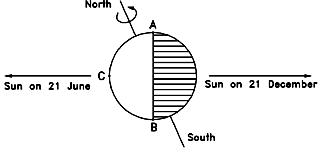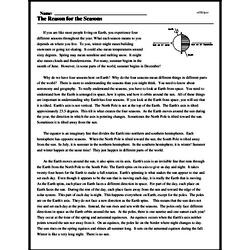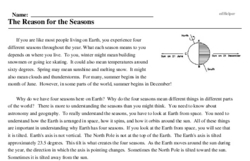The Reason for the Seasons
If you are like most people living on Earth, you experience four different seasons throughout the year. What each season means to you depends on where you live. To you, winter might mean building snowmen or going ice skating. It could also mean temperatures around sixty degrees. Spring may mean sunshine and melting snow. It might also mean clouds and thunderstorms. For many, summer begins in the month of June. However, in some parts of the world, summer begins in December!
Why do we have four seasons here on Earth? Why do the four seasons mean different things in different parts of the world? There is more to understanding the seasons than you might think. You need to know about astronomy and geography. To really understand the seasons, you have to look at Earth from space. You need to understand how the Earth is arranged in space, how it spins, and how it orbits around the sun. All of these things are important in understanding why Earth has four seasons. If you look at the Earth from space, you will see that it is tilted. Earth's axis is not vertical. The North Pole is not at the top of the Earth. The Earth's axis is tilted approximately 23.5 degrees. This tilt is what creates the four seasons. As the Earth moves around the sun during the year, the direction in which the axis is pointing changes. Sometimes the North Pole is tilted toward the sun. Sometimes it is tilted away from the sun.
The equator is an imaginary line that divides the Earth into northern and southern hemispheres. Each hemisphere has opposite seasons. When the North Pole is tilted toward the sun, the South Pole is tilted away from the sun. In July, it is summer in the northern hemisphere. In the southern hemisphere, it is winter! Summer and winter happen at the same time! They just happen in different parts of the world.




